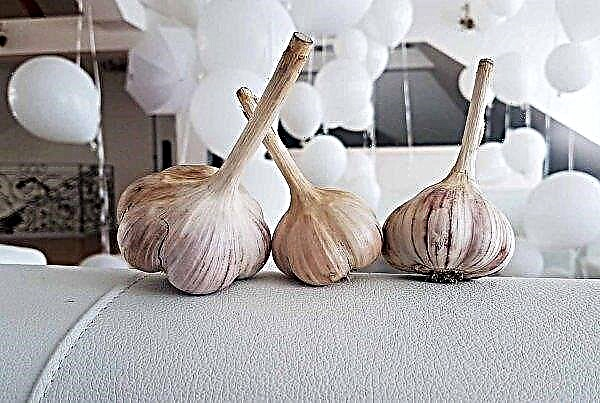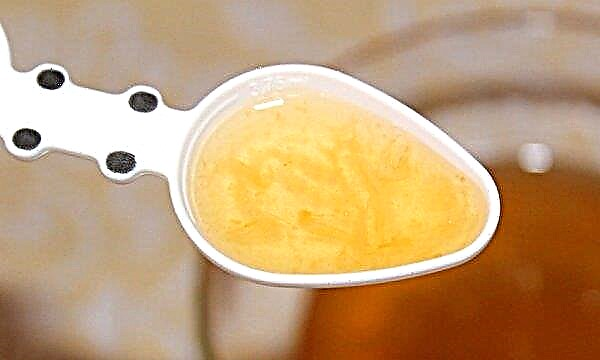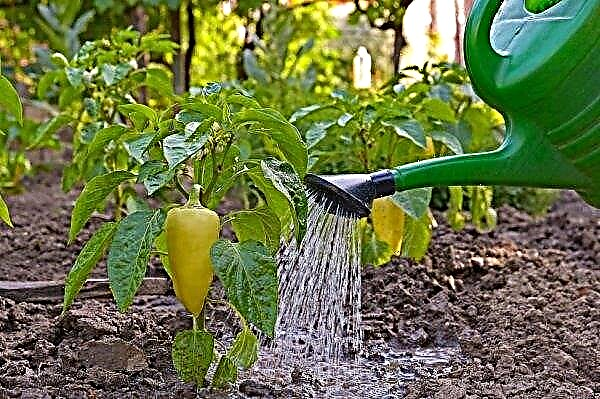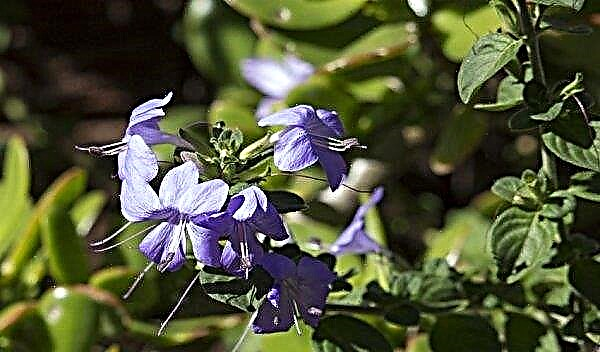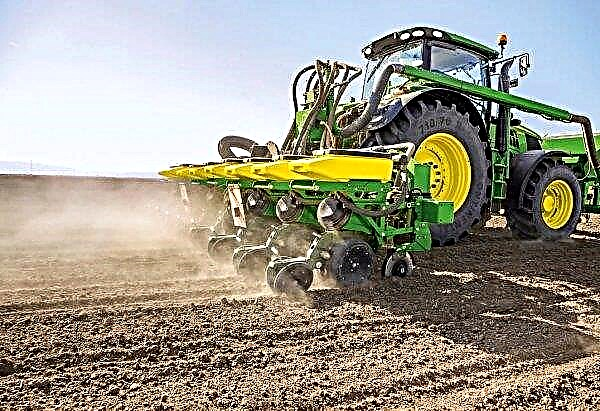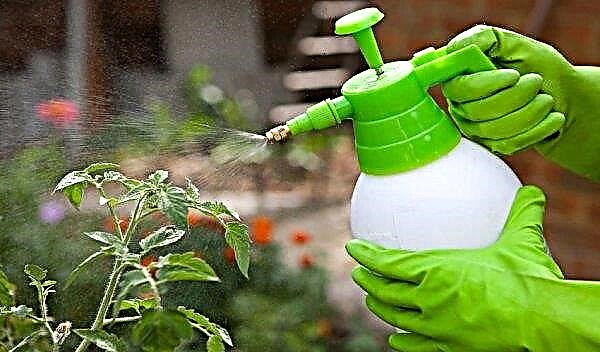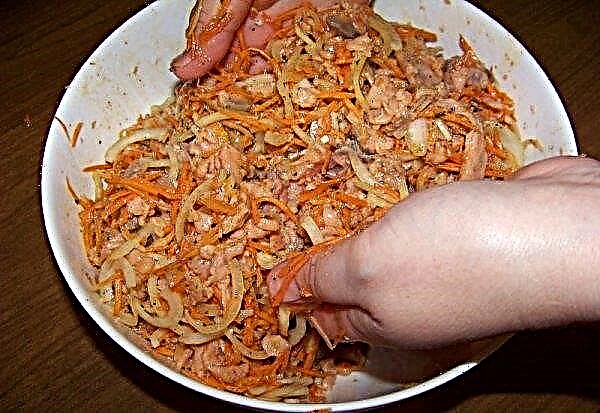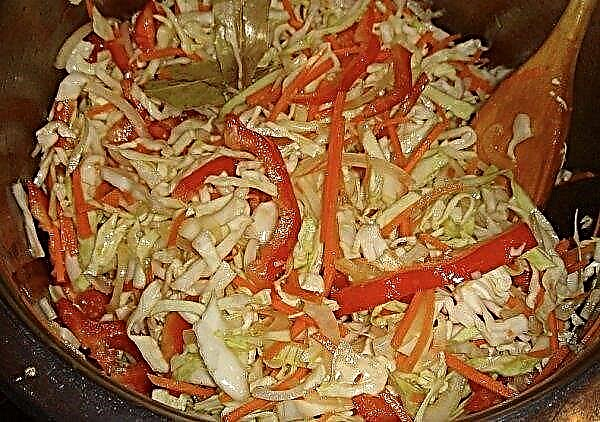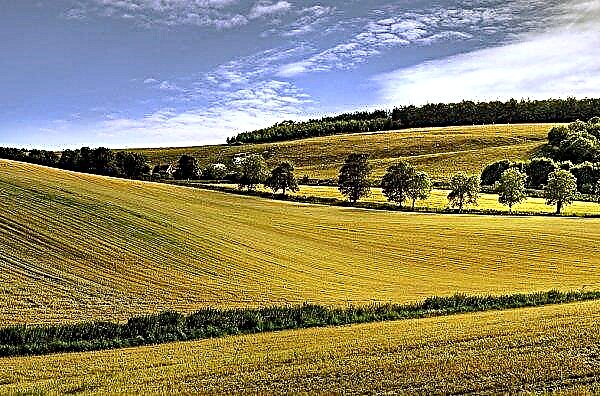Larch is a representative of coniferous plants belonging to the Pine family. This tree, like its other relatives, is often subjected to various misfortunes, as a result of which the culture can not only lose its attractive external features, but also die.
Larch Disease and Control
Fungi, mold, and other microorganisms that can infect the species in question of the genus of woody plants often arise under improper conditions for growing larch or as a result of damage to various insects.
Did you know? In the XIX century, this culture was considered very valuable. At that time, Peter I imposed a ban on the sale of larch forests to private owners due to the fact that the wood of this tree was the basis for building the Russian military and merchant fleet.
The most common diseases of this representative of the genus Pine may include:
- Lichens. As a result of exposure to fungi, the needles in the tree begin to dry and fall off. Microorganisms can survive the winter by hiding in plant debris, and from the spring period they repeatedly hit the tree. Lichens occur to a greater extent as a result of increased air humidity, and also if, during group planting, the distance between the cultures does not meet the standards (by listening densely). If in time to carry out the procedure of shaping and cutting, this will be an excellent preventive measure against this disease. This is due to the fact that the amount of moisture in the tree is significantly reduced, and therefore the risk of fungus infection is also reduced.

- Rust. This disease is accompanied by the formation of yellow vesicular masses on the needles. Subsequently, the affected areas fade, and with a severe defeat, the needles are completely covered with yellowness and die. The most effective method of treatment is the removal of damaged branches with the subsequent introduction of various immunostimulating fertilizers. Experts say: in order to prevent rust, you should refuse to plant larch near the birch.
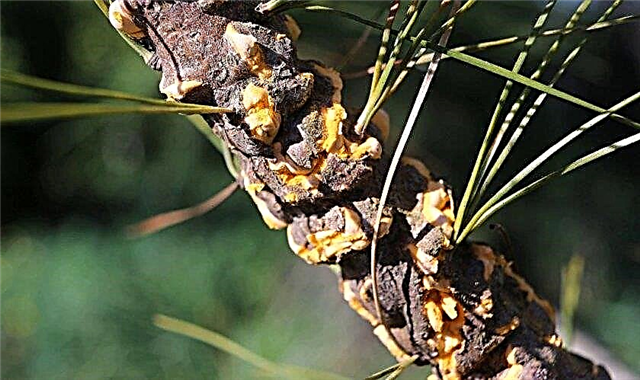
- Alternariosis. This disease affects the branches of the plant, forming a black coating. As a result of this disease, the needles are crumbling, and the newly-formed (one-year) shoots do not survive wintering. As in the case of lichen, a dense landing should be abandoned to prevent alternariosis. Timely planned trimming of the crown will also serve as an excellent prevention.

- Schütte Mushroom. This disease most often begins to appear in May, when the needles of the tree become covered with a spotty brick color. The effect of the fungus is yellowing of the needles and their shedding. With significant humidity, this disease first affects the top of the crown, gradually descending throughout the tree. Naked shoots with the defeat of the Schütte mushroom do not tolerate winter and die.

- Necrosis. This disease is accompanied by drying and shedding of needles. The fungus is located on needles and cones, and it appears as a stroma on the larch bark.
- Rot. Due to various mechanical damage to the larch bark, as well as burns or significant temperature changes, wounds form on the stem and branches. These sites are the habitat and breeding of various microorganisms. Fungal and other infectious diseases can affect both young and old trees in the form of rot and cancer. The wounds, growing, lead to the death of the affected parts. If you do not overcome this disease in time, then the plant may die.
Important! To cure larch from various diseases, experts also recommend using such a modern and effective remedy as subcrustal injection, for example, with Cytovit or Siliplant preparations.
- Tracheomycotic wilt. The disease is accompanied by drying out, the death of the upper shoots and yellowing, and after the redness of the needles. If microorganisms get to the roots, then this underground organ is painted in brown color. The plant is sick as a result of the soil pathogen. Seedlings and one- or two-year-old crops show the greatest damage. The disease manifests itself as a result of a lack of sun and stagnation of moisture. Farming with land can solve this problem.

The struggle to prevent diseases resulting from exposure to fungal and infectious microorganisms for larch is the same:
- acquisition of healthy seedlings and their preliminary treatment with fungicides;
- conducting a sanitary haircut;
- garden wound treatment;
- the use of immunostimulating fertilizers;
- conducting spring spraying with preparations containing copper;
- wood processing with Bordeaux mixture (from July to September);
- treatment with fungicides (late autumn), Fundazolum (0.2%) (in spring with a frequency of 1.5 weeks) and, if necessary, repeat the course in the summer.
Septoria
This disease is caused by Septoria fungus. The first signs appear as brown spotting on the needles. The needles on the upper layers of the crown are less affected than at the bottom of the tree. When the spots merge, the needles take on a scorched appearance, which is especially distinguished in the summer and autumn periods. The disease under consideration mainly appears with high humidity of air and soil.

To prevent the occurrence of this ailment, it is recommended to grow larch in a well-lit area, introduce nitrogen into the ground if necessary, and also not to flood the culture. Also good prevention is considered to be watering the soil with Gliocladin or Trichodermin solutions.
If the disease has a significant scale of damage, it is recommended to destroy larch to prevent infection by nearby trees. If septoria does not severely damage the plant, then it is necessary to treat the culture with preparations containing copper and sulfur.
Repeated spraying with fungicides is recommended after a week or 12 days. The most effective means are copper sulfate or Oksikhom. You can also use drugs such as Fundazole, Previkur or The Ordanbut, unlike the former, they should be used alternating after one season.
Soft black spots on the larch trunk
A common occurrence is the defeat of larch cancer. They occur when the plant is infected with pathogens. Unfortunately, it will not be possible to completely cure larch, there are only ways that stop the development of cancer on the trunk.

If during the inspection, affected areas were found, then first of all, all conifers growing nearby should be protected. There is also a method with preserving the tree - the use of biocides on sick and healthy plants, as well as the cleaning of areas on the trunk covered with black coating, the disposal of diseased branches.
This disease initially looks in the form of black soft spots, which, growing, form a roller along the edges, and then develop into a wound. They clean the affected areas to healthy wood, and after processing this area with antiseptic drugs of prolonged action.
Did you know? Today, on average, larch lives up to 4 centuries, but specimens with an age of about 800 years have also been registered in Russia.
Larch pests
The plant in question is often attacked by various insects both in the form of larvae and adults.
Among the pests of this coniferous tree are:
- brown aphid;
- spruce-leaved red hermes;
- worms;
- berry bug;
- hardwood moth;
- sawfly;
- leaflet;
- bristly weevil;
- kidney gall midge;
- pine cone and others.
Larvae
Insects in this period of their development can be quite hungry, as they need a lot of energy to move to a new stage and fully mature. Most often, pests in this form feed on the juice of needles, as a result of which it begins to lose its natural color and die.

Sawfly larvae have similar characteristics with a butterfly caterpillar. They first eat the grooves of the needles, and eventually completely eat the needles. They hibernate in cocoons, and in the spring they already hit a tree in the form of adults. The larvae of the kidney gall midge infect certain areas of the tree. The insect at this stage of development rarely affects the needles.
Check out

The main food of the larvae are the kidneys, where they live until complete maturation. A female larch fly leaves its eggs under the scales of the cones. Hatching after 6 months, the larvae hit the needles, as a result of which it turns brown and dries out.
Larvae of the cap moth, which destroy the needles especially intensively in 3-4 weeks of their development, are considered quite dangerous for larch. Most often, the needles are eaten from the inside, as a result of which it becomes pale and fades. For winter, the larvae hide in cocoons on the wood of trees. After pupation, the insect enters a new stage.
To rid the plant of larvae, it is necessary to carry out such actions:
- Dig the land around the plant and dispose of the fallen needles.
- Spray insecticide habitats.
- Affected areas are recommended to be removed.

Insects
Adult individuals of various pests can affect not only the needles of the tree in question, but also its crown as a whole. Green hermes affects the needles on young shoots, as a result of which these branches weaken and are not able to survive the winter. Insecticides are the solution to this problem.
When a tree is struck by worms, then it the needles will turn yellow and deform. AND shoots are covered with white coating. This dangerous insect can lead to the spread of various viruses. Processing with tobacco solution (repeated procedure - with an interval of a week). Large-scale insect damage is only prevented by insecticides.
Important! Brown aphids often settle on damaged areas of the tree, which can be destroyed with a soap solution. This procedure requires sheltering the soil around the larch. This is necessary in order to protect the root system from the alkaline effects of the drug.
The leaflet is a small dark caterpillar that settles on needles and kidneys and destroys them. In mid-summer, this insect forms nests on the ground from fallen needles. These nests must be removed, and the tree itself treated with insecticides with the addition of mineral oils.
To destroy the bristle weevil, presented in the form of small bugs, it is necessary to use the same preparations for spraying the plant, as in the case with the leaflet. This insect very often affects young plants, eating their buds. A timely sanitary haircut is also an excellent way to get rid of this beetle.

Other causes of falling needles and cracking of bark
Deficiency of nutrients in a plant significantly affects its appearance and condition. The lack of various trace elements can also provoke the development of various diseases, and weakened larch is often attacked by various insects.
For example, with insufficient nitrogen, the color of the larch needles turns pale, with a deficiency of iron it turns yellow, and in the absence of phosphorus it turns red. The final phase of this state of the plant is the fall of needles. In this case, it is necessary to use fertilizers for conifers, which have an immunostimulating effect.
It is necessary to feed larch in turn: to make root products, and after a while to process needles with nutrients. Excellent drugs that normalize the balance of nutrients, consider Zircon or Nikfan.
Flaking off larch bark cannot be considered normal. A significant number of cracks is a clear sign that the tree needs help. When the bark cracks, inside the cracks very often there are both pests and various fungal or infectious diseases. The causes of cracks can be sunburn, sharp drops in temperature, the presence of high groundwater, as well as mechanical damage.
First of all, it is necessary to carry out disinfection, which consists of the following steps:
- Removal of 1-2 pieces of bark, if possible (forced cleansing is unacceptable).
- Treatment with a solution of one percent copper sulfate (with mandatory hit in the cracks).
 The following actions are root dressing of the plant with coniferous fertilizers (35 g per 1 m²) and watering the plant with Epina solution (2 ampoules per 10 liters of liquid), as well as spraying the needles with the same preparation (1 bottle per 5 liters of water).
The following actions are root dressing of the plant with coniferous fertilizers (35 g per 1 m²) and watering the plant with Epina solution (2 ampoules per 10 liters of liquid), as well as spraying the needles with the same preparation (1 bottle per 5 liters of water).
In order to protect the needles from shedding and prevent peeling of the bark, it is recommended that you carefully select a place for planting from the very beginning:
- so that the larch receives enough lighting, but the sun does not burn the young tree;
- the plant should have enough moisture, but it will not tolerate stagnant water;
- the climate must meet the requirements of the culture, as, for example, high humidity can cause various diseases.
Thus, the considered representative of the Sosnovy clan is often exposed to various misfortunes. Microorganisms, larvae and adult insects, inhabiting larch, can affect various parts of it. As a result of their exposure, the plant either loses its attractive appearance, or gets sick, and then dies.
To combat these scourges, it is necessary to carry out various preventive and therapeutic measures. It is also very important to follow all agrotechnical rules for caring for this crop to prevent diseases or weaken the tree.






